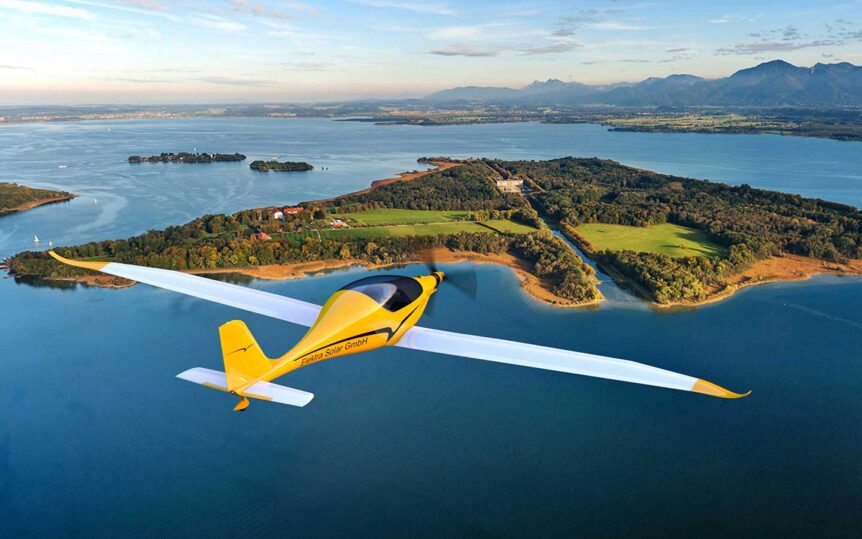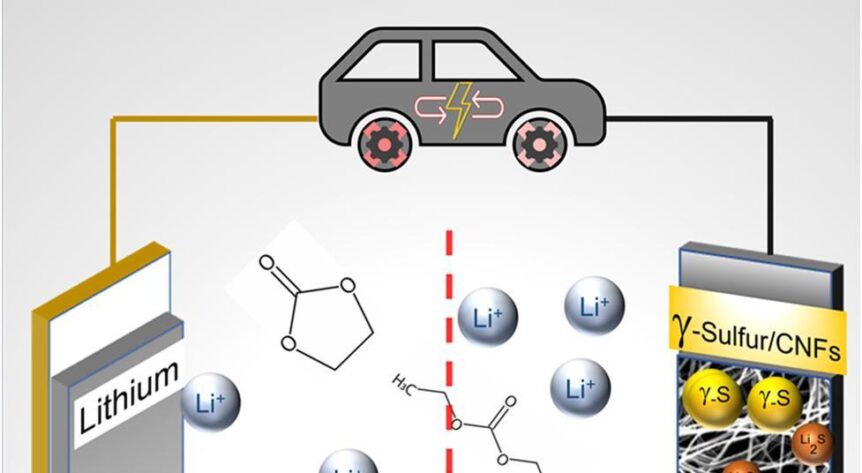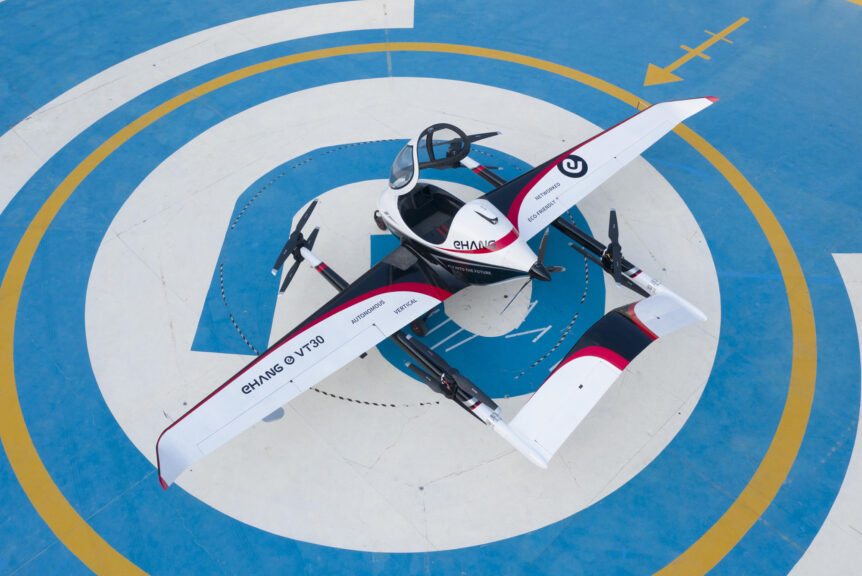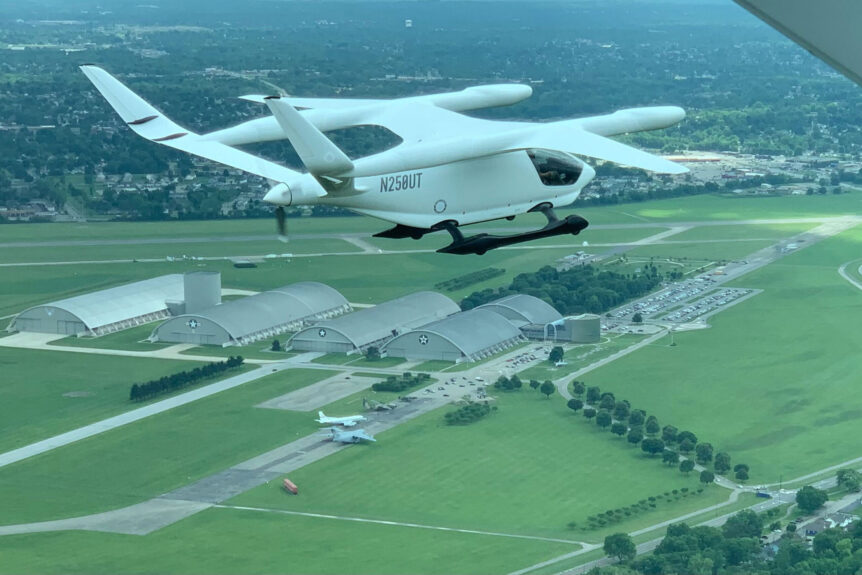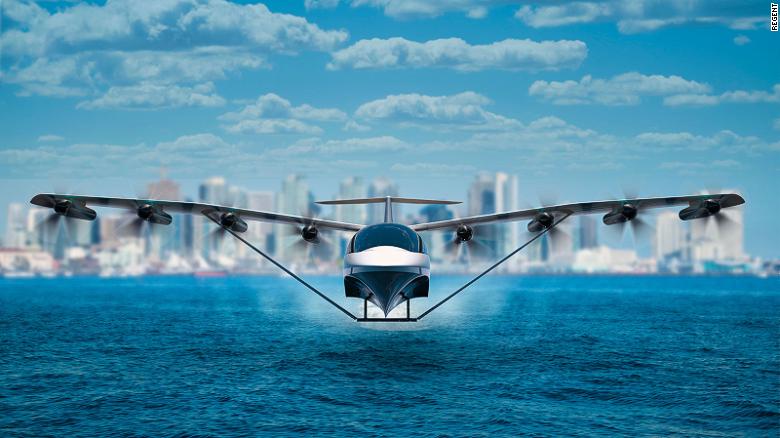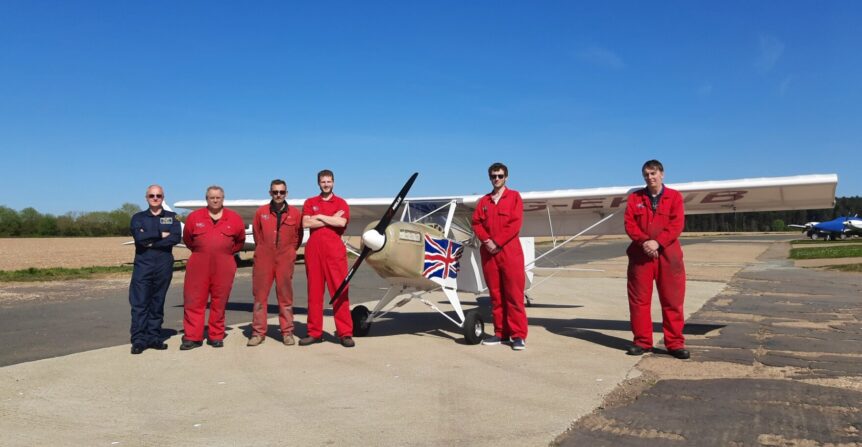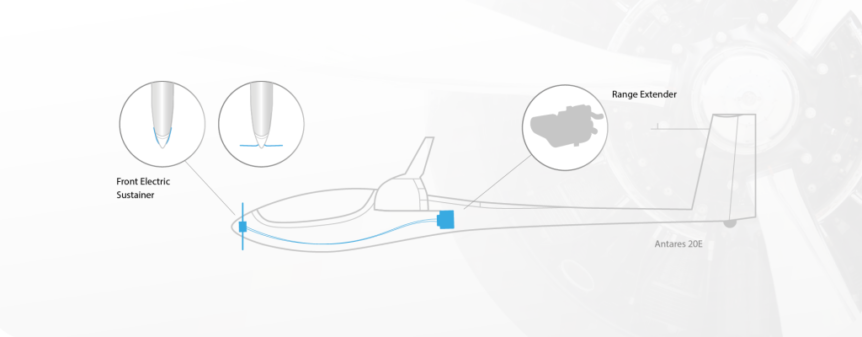Elektra Solar introduced its Trainer, a new two-seat craft, at this year’s Aero Expo. As reported here last year, the airplane features side-by-side seating to facilitate training, doubtless enhanced by the low noise level – 50 dB, according to the company. Based on German ultralight standard LTF-UL 2020. Compared to a “moderate rainfall noise,” the low sound level allows operation in noise protected areas and should enable easy communication between student and instructor. Safety and Performance With safety in mind, Calin Gologan, the plane’s designer, chose Geiger Engineering’s HPD50D dual motor. Putting out 50 kilowatts continuously or 70 kW peak power, the 16 kilogram (37.3 pound) unit can run on either or both rotors. Both independently controlled motors drive a 1.75 meter (5.74 foot) controllable-pitch propeller at up to 2,600 rpm. If one motor fails, the remaining unit can maintain a climb rate of 1.5 meters per second (295 feet per minute). With both motors running, the craft can climb …
Drexel’s Accidental Sulfur Battery Discovery
Chained to Supplies? A sulfur battery uses an abundant, energy-dense material not subject to the limitations of many supply chains like those for lithium, cobalt, and nickel – all necessary for batteries as they are now constructed. William Lockett, writing for freethink.com, highlights the potential magnitude of a discovery by Drexel University researchers. “Every now and then, revolutionary technology seems to spontaneously appear out of thin air and change our world. Dynamite, penicillin, X-ray machines, and even microwaves are all examples of such revolutionary accidental discoveries. “Well, this year we may have had yet another. However, this time it is set not only to revolutionize the way we live, but potentially save our planet from looming climate change by unlocking an elusive technology: lithium-sulfur batteries.” Drexel’s Accidental Discovery Drexel University may have come up an answer to that need, even big enough to justify Lockett’s enthusiasm. Vibha Kalra, PhD. leads the school’s Department of Chemical and Biological Engineering, and reports …
Lift + Cruise Transitions for eVTOLs
A New Mission Some formerly rotor-only eVTOLs are transitioning to a new configuration – one with wings for greater range and speed. Vertical takeoffs and landings are OK for short-range Urban Air Mobility (UAM), but not necessarily good for longer range flight. Hovering flight requires thrust equal to the weight of the vehicle, and climbing requires additional thrust. Switching to wing-borne flight reduces the power necessary and increases flight duration. Some trends in housing and commutes indicate longer, regional flights may be necessary to fetch workers from ever more far-flung homes. Purely rotor-borne flight will still be viable for short trips with batteries, but wings add speed and endurance. VoloConnect Volocopter, having started with a simple multi-rotor prototype 10 years ago, now offers VoloCity, an 18-rotor eVTOL (electric Vertical Take Off and Landing) craft soon to start service in Singapore, Since the island nation is only 283 square miles, about 3.5 times the size of Washington, D. C, that makes …
ZeroAvia Finds Widespread Interest, Challenges
ZeroAvia is finding its way into the development of hydrogen-fueled aviation, and finding along its way great interest and challenges. ZeroAvia, now in Hollister, California, Cranfield, England, and Everett, Washington finds widespread interest in serving multiple clients, since its projects fit a wide dynamic range of exciting possibilities. The three locations enable adhering to different certification requirements while meeting diverse challenges. Val Miftakhov, founder and CEO of ZeroAvia, has grand plans for his company and the clients it will serve. Otto Celera 500L Lurking on the sidelines of the Victorville, California airport for what seemed years, this craft was a great mystery with unspecified potential. Now it’s flying with a 550 horsepower RED (Raikhlin Engine Development) V-12 Diesel powerplant and seems to fulfill the dictum that if it looks good, it will fly well. The bullet-shaped aircraft can fly for a mere $328 an hour, taking six passengers over 400 miles in that time. Otto compares this to the $2,100 …
Beta’s Alia Makes a Highly-charged Trip
Beta Technologies has taken an all or nothing approach from its beginning, designing charging stations and flight crew centers to complement its aerial vehicles. Last month, Beta got a chance to show at least part of its cross-country ambitions. A Six-State Outing From May 23 to May 24, Betas Alia 250 eVTOL (electric Vertical Take Off and Landing) aircraft made one of the longest cross-country flights at that time for such a vehicle. Alia did not take advantage of its vertical capabilities, relying instead on conventional runway-borne takeoffs and landings. The total flight from Plattsburgh to Bentonville covered 1,355 miles (2,181 kilometers) and took almost 12 hours – about like a similar flight in a Cessna 172. Charging Stations Beta has planned well-thought-out charging stations to complement the craft and crews. Each 480-Volt station has a landing platform roof, crew quarters with sleeping and bath accommodations and, of course, a charger. The current route included stops where the Beta charging …
Electra.Aero Acquires Airflow
Too Similar Not to Have Joined Forces The PRNewswire.com press release lauds the acquisition of Airflow.aero by Electra.aero: “Hybrid-Electric Blown-Lift eSTOL Plane Developer Electra Acquires Airflow to Create a Leader in Advanced Air Mobility.” The two companies have been developing similar multi-motor, blown-lift aircraft for the past few years. Electra’s has eight motors distributed across its wingspan, Airflow’s has 10. They both use large multi-element flaps to divert propeller thrust downwards, enabling extremely short takeoffs and landings. A Great Idea, but Better with Electric Power This is not a new concept, having been demonstrated in the 1960s by French manufacturer Breguet and American McDonnell. The 188 was a demonstrator that didn’t pick up any orders in either country. The narrator explains propeller control was a mechanical-hydraulic process and no electronics were involved. The complex system might have been a maintenance challenge airlines were unwilling to take on. Electra.aero’s hybrid-electric approach might be the answer to simpler, reliable propulsion, essential for …
Electric seagliders Skimming Coastal Waters
REGENT seaglider Skimming the Waves WIGs are Wings in Ground Effect, a type of flight that keeps one just above the sea’s surface. Simplified, when a wing is at an altitude less than its span, it operates in a ground effects cushion that adds lift. According to backers of REGENT’s seaglider, such a craft can skim the waters in low-level flight while providing transport cheaper and quicker than water-borne alternatives. CNN reports, “…a Boston-based start-up backed by some of Silicon Valley’s most prominent investors wants to turn the sea lanes along the country’s east and west coasts into high-speed transit corridors.” The firm identifies their company name as an all-caps, proper noun acronym – Regional Electric Ground Effect Nautical Transport. They denote the “seaglider” as a common noun describing the type of craft they are building. It combines WIG technology with hydrofoils, and in the process gains an odd certification for an airplane. Classified as a seagoing vessel, it will …
Group 14 Gets a Push from Porsche
We covered Washington Governor Jay Inslee’s visit to the Group 14 Technologies battery plant in Woodinville last year. Now the Group is getting attention from Porsche, among other funders. The startup company announced raising $400 million from investors including the Teutonic automaker. According to Reuters, part of those funds will be used to build a second battery materials plant in eastern Washington State. The company is now valued at over $1 billion, money which will help expand battery materials production for the silicon-lithium cell market. Silicon is a desirable material in batteries, capable of storing more energy than lithium or other metals. It has a major drawback, though. In expanding and contracting during charge-discharge cycles, it eventually deteriorates, crumbles, and brings the battery’s usefulness to an end. Dr. Yi Cui of Stanford University has tried various methods over the years to prevent such crumbling. His firm, Amprius, has developed a silicon nanowire anode that enables a battery with 450 Watt-hour …
British Craft eKub
A Proper British Aeroplane eKub is the latest offering from The Light Aircraft Company (TLAC), a British company that specializes in modern adaptations of classic-themed flying machines. At nearby Cranfield University, Dr Guy Gratton, Associate Professor of Aviation and the Environment, teaches and acts as test pilot on the eKub. Gratton is also an Associate Fellow of the Society of Experimental Test Pilots. TechXplor reports, “After taxi tests and “low hops,” the single seat Sherwood eKub made its first flight of 10 minutes and then a second flight later in the day of 22 minutes from Little Snoring airfield in Norfolk.” He can’t seem to get enough of the little ultralight single seater, posting a Tweet showing his takeoff in G-EKUB. He reports, “Back in the electric office today, more lessons learned, more progress towards practical and viable electric aeroplanes.” In response to a reader’s question about battery limits on flight time, he explains, “Looking increasingly that we’ll hit our …
Antares, FES, and AdvanTec Create E-ROP Hybrid
E-ROP is a multi-party program using an Antares self-launching sailplane. FES and Adventec have crafted a hybrid version of the Antares 20e with a front electric sustainer (FES) motor in place of its tall mast-mounted motor. An incremental program, E-ROP begins by replacing the retractable unit with an FES motor on the nose. This reduces the drag created by the motor being raised into position and simplifies operation. The FES Antares flew for the first time on April 19 with Klaus Ohlmann at the helm. Ulrich Bronet recorded this short video. Under development since 2016, E-ROP will benefit from an advanced battery package from research partner AdvanTec GmbH. According to the project, “The concept provides for batteries in the fuselage and wings, which have an energy capacity of 22 [kilowatt-hours] at a total take-off weight of 650 [kilograms] (1,433 pounds) MTOM (Maximum Take Off Mass).” 22 kWh is about one-fifth of a Tesla battery package and will allow up to 450 …

